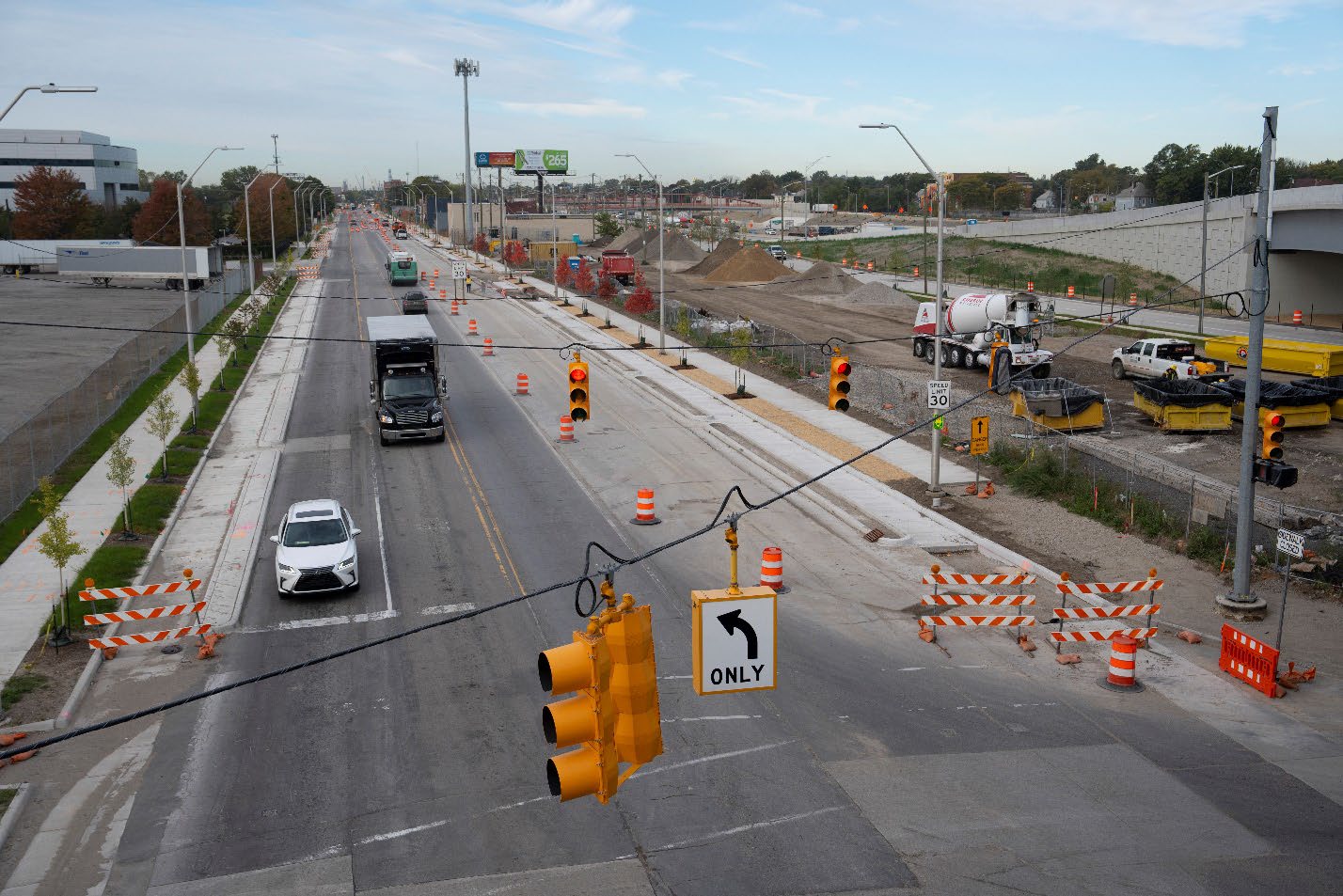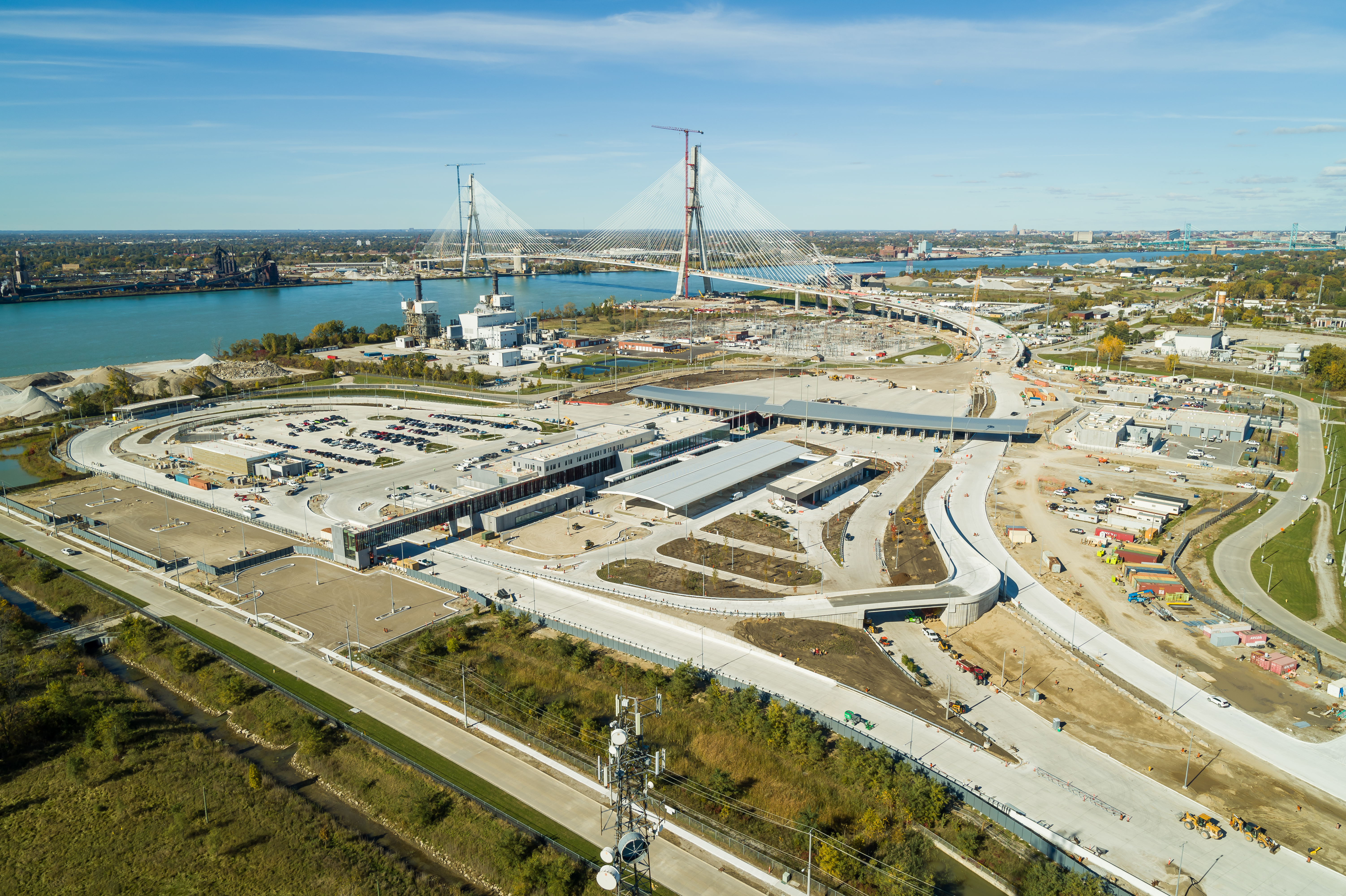As part of the Gordie Howe International Bridge project, Early Works activities will prepare the Canadian Port of Entry site for the work to be undertaken by the private-sector partner to be identified through a separate procurement process.
There are three components to Early Works:
- construction of a perimeter access road (PAR)
- utility relocation
- the placement of fill, grading and drainage.
Early Works construction is expected to be complete by December 31, 2016.
 The new Canadian Port of Entry will include several buildings, roadways, parking lots as well as bridge ramps and bridge piers. All of these structures will require a solid base on which they can be built. Under natural conditions, it could take ten-to-twenty years for fill and the underlying soil to consolidate and ensure that there is a solid base on which to build the facilities and bridge piers. Waiting many years for the soil to settle is not a viable option for any construction project. To expedite the consolidation process and the construction schedule, more than 850 kilometres of wick drains were installed at the Canadian Port of Entry.
The new Canadian Port of Entry will include several buildings, roadways, parking lots as well as bridge ramps and bridge piers. All of these structures will require a solid base on which they can be built. Under natural conditions, it could take ten-to-twenty years for fill and the underlying soil to consolidate and ensure that there is a solid base on which to build the facilities and bridge piers. Waiting many years for the soil to settle is not a viable option for any construction project. To expedite the consolidation process and the construction schedule, more than 850 kilometres of wick drains were installed at the Canadian Port of Entry.
The wick drain, also known as a prefabricated vertical drain (PVD), is a relatively simple device which is used to provide drainage paths for water fluid in the soil or between rocks.
The drains are composed of a plastic strip with drainage channels which are wrapped in a geotextile fiber fabric that prevents soil particles from entering the channels and clogging the drain.

Wick drains are installed using specialized equipment called a stitcher. The stitcher is mounted either on an excavator or a crane and consists of a vertical mast housing a hollow mandrel. The mandrel houses the spool of wick drains which is hydraulically pushed or vibrated into the ground to the desired depth. As the mandrel is withdrawn back into the mast, the wick drain is left within the soil. The wick drain is then cut.
The result: The use of wick drains dramatically reduces settlement time from years to a matter of months and allows construction of the Canadian Port of Entry to proceed on schedule.
Learn more about the Early Works activities at www.gordiehoweinternationalbridge.com/en/early-works.
For more information about the Windsor-Detroit Bridge Authority and the Gordie Howe International Bridge project visit www.gordiehoweinternationalbridge.com. Follow us on Twitter at www.twitter.com/WDBAbridge, like us on Facebook at www.facebook.com/WDBAbridge and connect with us on LinkedIn at www.linkedin.com/company/wdba-apwd.



